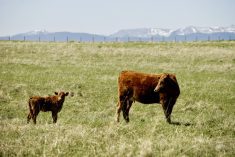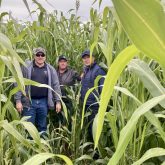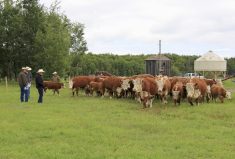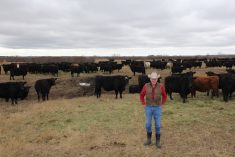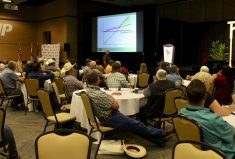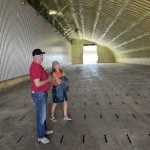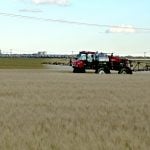Since the end of World War Two, we have been developing a ranching and farming culture more dependent on fossil fuel, iron, synthetic fertilizers and chemicals. Early on those inputs (tractors, vehicles, equipment, seed, fertilizer, pesticides, herbicides, etc.) were relatively inexpensive. During the last 60 years, those input prices have increased more rapidly than the price change in the animals we produce.
Would it not make more sense to reduce dependence on those inputs and develop a system that has a much higher dependence on soil, rainfall, sunshine and our human ingenuity?
Read Also
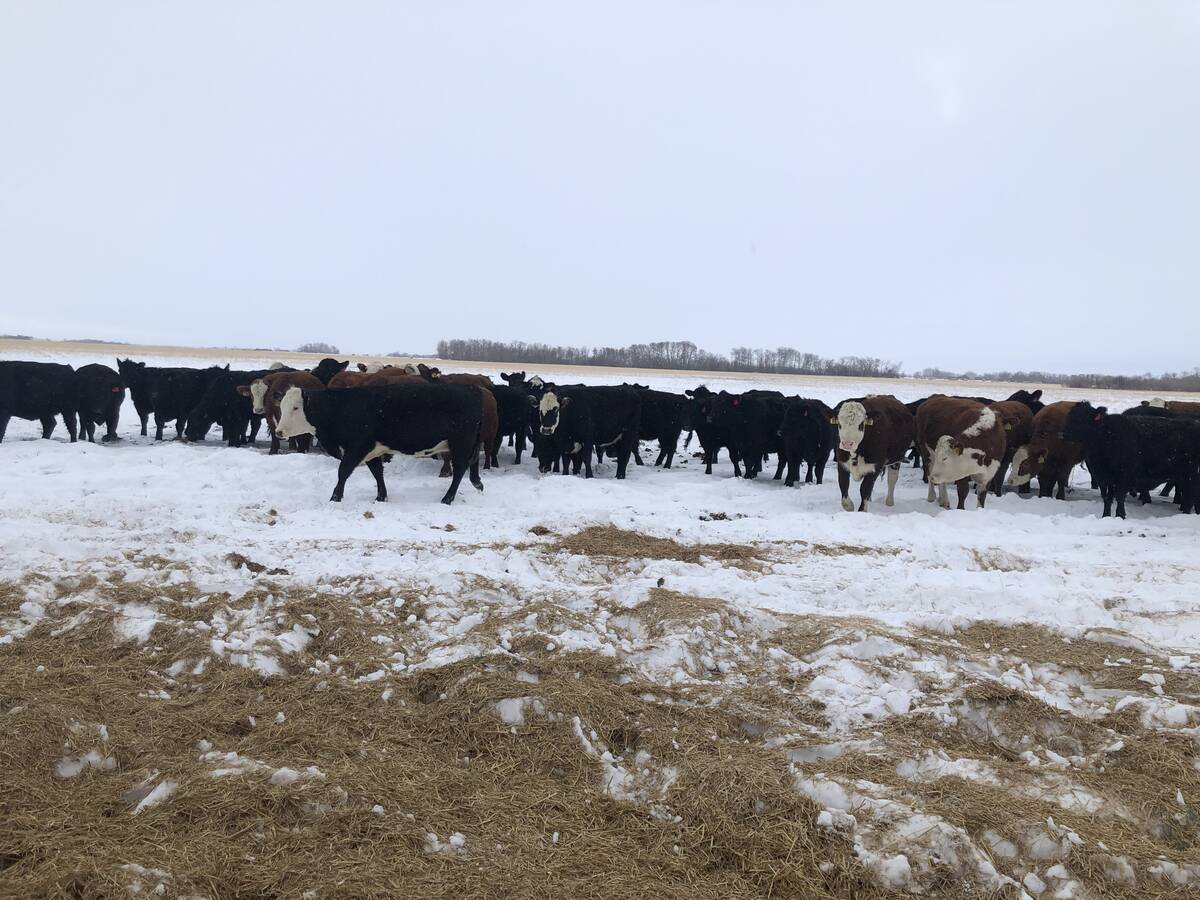
Picking the most efficient cows to rebuild your cow herd
A new cow ranking system to help beef farmers and ranchers pick the most efficient cows as they rebuild their herds.
This change requires a change of mindset and becoming a lifelong learner. Many conventional ranching habits get in the way of making bottom-line progress. We tend to gravitate toward new “magical” inputs or technologies to increase production and then hope the value of the added production will outweigh the added costs. This doesn’t often happen.
About 30 years ago, I was asked to give a talk titled “10 Things That Have Helped Me the Most in my Management During the Last Five to 10 Years.” I developed my list, gave the talk —which seemed to be well received — and kept thinking about the list. Over the next few years, I shortened the list to five:
- Your approach to management should be both integrative and holistic.
- Strive for continuous improvement of land, livestock and people.
- Acquire and use a good set of planning and decision-making tools.
- Wage war on cost.
- Emphasize marketing.
In my talks and writings, I have referred to this list many times. It has become intuitive to me and is always on my mind. I truly think this list includes the “five essentials” that, if followed, will lead to profitable ranching. You will become a lifelong learner and be ever-improving in your approach to management, and the results will be continually more satisfying. This article will discuss the first two essentials.
Integrative and holistic management
For your approach to be integrative, you collect individual pieces of information, ideas, observations, learning and experiences into a single “whole” or one thought process. In other words, it is an assembly of bits and pieces of helpful information.The process never ends; but, as it is going on, you also become “holistic” in your approach as you begin to see your ranch as a single “whole” rather than an assembly of individual parts.
You start to recognize that the parts are interconnected and interact with each other in a grand sense. You begin to see there are no singular effects. As we make one change in our management, it will have compounding and cascading effects moving into the future — which are positive or negative, never neutral.
READ MORE: Profitable ranching — is it possible?
As you make changes in grazing management, breeding, marketing or people assignments, you will see that a change in one will affect all the others whether you want it to or not. As you become holistic in your approach, you will begin to anticipate and observe these effects; and observation will tell you if you are making good decisions.
You will also notice that plants, animals, birds, insects, etc., function differently in diverse polycultures than they do in isolated monocultures. Thus, you may become quite disappointed in a plant that seemed to have great potential when grown in an isolated test plot. When you place it in a diverse polyculture with many other species of grass, forbs and legumes, it might not do so well. Or one that seemed mediocre might do very well.
The same type of thinking and observation might help you understand why a pesticide seemed to be very effective for a few years but finally didn’t seem to control the target pests. You have to conclude it never was 100 per cent effective, and the pests that survived were the ones that reproduced, leaving more pests that could also survive.
Did we ever think of selecting animals that had natural resistance to pests? Or that placing animals in closely bunched herds might attract birds to feed on fly larvae and flies? How difficult is it for forbs (weeds) to become very dominant in a highly diverse polyculture, especially when the animals eat most of the forbs along with the grasses? We need to holistically think as far through the problem as our integration enables.
Continuous improvement
If land, livestock and people are continually improving, profitability will also be improving.There is nothing better than regenerative practices for farm and ranch land, including excellent grazing management for range and pasture land and integration of livestock into farmland. Adaptive multi-paddock grazing, as my colleagues at UnderstandingAg call it, is my much-preferred way of improving land. It will improve carrying capacity, animal performance and soil health. It will also increase biodiversity of every kind. My previous grazing management articles from the March and April 2022 issues of Canadian Cattlemen will provide a good review of how to do it.
For improvement of livestock, select cattle that fit the toughest times of the year in your unique environment. We easily get talked into trying to produce calves with big weaning weights, but weaning weight increases come with a cost. The cost may be in keeping a bigger, higher-milking cow that requires more feed and doesn’t re-breed as well as the smaller mother of a smaller calf. Try to get comfortable with a cow that fits nicely with your unique environment. She will require fewer inputs and be more profitable. I previously wrote an article on the cattle, which ran in the October 2021 issue of this magazine. I hope you will reread it to see the description of a good cow — the kind that makes ranches profitable — along with some ideas on how to cull cows and select bulls. Improvement of cattle and land will move along together if you are consciously trying to match your cows to the environment, improving your grazing management and choosing a calving season that will enable you to use few inputs and get excellent reproduction rates. Remember, you are not striving for production or even profit per cow. It’s profit per acre that matters. That usually means a smaller, problem-free cow that is very fertile.
Improvement of people begins with understanding the manager’s job, which is to create an environment in which people want to excel and then provide the tools, training and freedom to do it. To do that, you need to develop a vision that is exciting where several skills and abilities are needed. Then recruit well, onboard and train well and then follow up by giving more responsibility to team members who learn and perform well. Often an increase in responsibility and autonomy is as rewarding as an increase in salary.
Leadership is best gauged by the voluntary response of those being led. Short courses, seminars and visits to well-run ranches can be very helpful in training your team and also in developing a long-term network of very helpful people. Many of them will be glad to have you as part of their network and team as well.
You won’t have continuous improvement of the land and livestock without continuous improvement of the people who learn to integrate numerous sources of information and manage with a systems or holistic approach.
Burke Teichert is a long-time manager of large ranches. He is also a consultant and speaker and can be reached via email.



